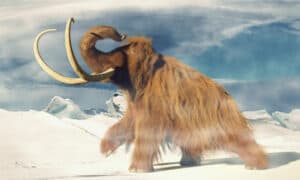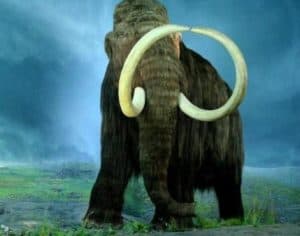Woolly mammoths were huge tusked animals which roamed the land for millions of years, eduring the cold, harsh conditions of several Ice Ages. Incredibly, humans and woolly mammoths actually lived alongside each other for a long time. But when did woolly mammoths go extinct? Why did they go extinct? We’ll answer these questions and discuss some other facts about these shaggy animals below.
About Woolly Mammoths
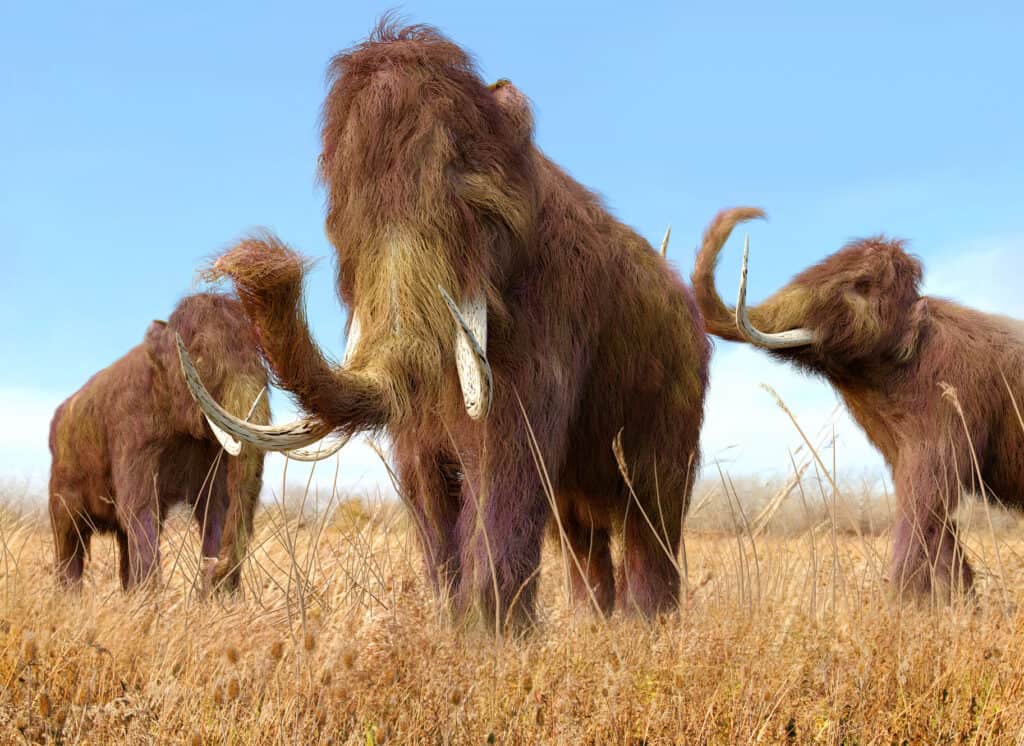
Although closely resembling todays elephants, woolly mammoths had huge, curved tusks and a shaggy coat
©iStock.com/Aunt_Spray
Extinct woolly mammoths are elephant-like mammals that were about the size of today’s African elephants. They’re so closely related to extant elephants that they have almost indistinguishable DNA.
They’re one of the species in the extinct genus that contains all of the animals we call mammoths. The woolly mammoth is specifically named after its most prominent feature which was its woolly coat. They were well adapted to the cold and lived in northern regions during the height of the last Ice Age.
Their coats kept them comfortable at sustained temperatures below -40 degrees Fahrenheit. Woolly mammoths were the last of nine mammoths to roam the earth and they were also the smallest type of mammoth at around thirteen feet tall. The Columbian mammoth was a hybrid woolly mammoth that came into play as mammoths descended south through America.
When Did Woolly Mammoths Go Extinct?
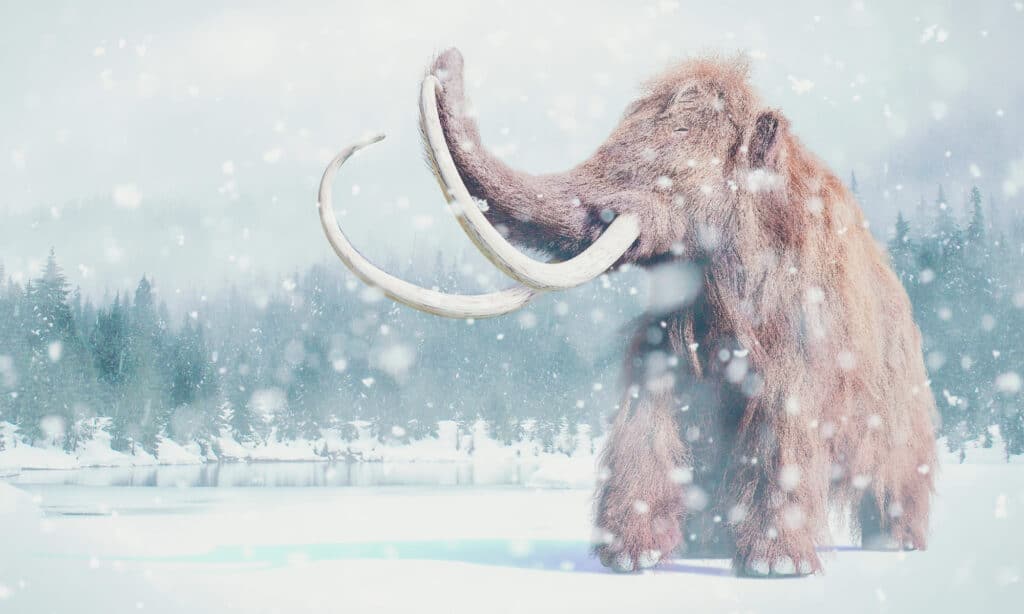
The last woolly mammoths died approximately 3,700 years ago.
©Dotted Yeti/Shutterstock.com
Woolly mammoths went extinct about 3,700 years ago. Most woolly mammoths had died off about 10,000 years ago with the disappearance of most megafauna, but a few populations held on in isolated pockets on Arctic islands. The last known individual lived on Wrangel Island near Russia.
There are a few people who think that woolly mammoths may still exist in isolated populations that are buried deep within Siberia. Since Siberia is massive and largely unexplored, it’s not completely impossible though it is highly unlikely.
Why Did Woolly Mammoths Go Extinct?
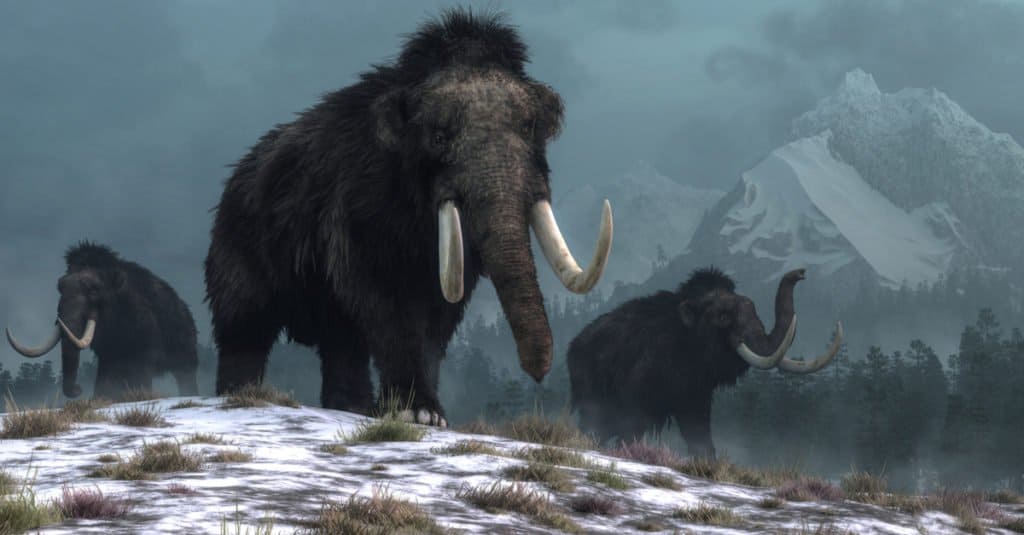
Woolly mammoths became extinct largely due to climate change.
©Daniel Eskridge/Shutterstock.com
Most woolly mammoths went extinct for the same reasons that most other megafauna went extinct 10,000 years ago. A combination of over-predation and climate change most likely killed off woolly mammoths.
Woolly mammoths were completely dependent on the grass and shrubbery produced by Arctic grasslands. As the earth’s climate warmed at the end of the last ice age, plant diversification and distribution dropped. This decrease in the traditional food supply of these mammoths may be one of the symptoms of climate change that helped to drive them toward their demise. Populations were cut off from each other as sea levels rose.
Woolly mammoths may also have been accustomed to roaming extensive ranges that became limited in the Arctic as the planet warmed up. These ranges also became exceedingly wetter as the Ice Age ended which posed both physical and environmental challenges that the woolly mammoth could not overcome. New precipitation levels limited the diversity of plants previously seen on the steppes that the woolly mammoth called home. Grasslands became huge mossy landscapes choking off the woolly mammoth’s primary food source.
As more woolly mammoths went extinct, they contributed to their own demise. They were the primary consumers of birch trees and as their numbers declined, birch tree forests grew larger. Birch trees retain heat. This helped warm the local environment that woolly mammoths called home which contributed further to the changes that were already threatening woolly mammoths.
The Woolly Mammoths of Wrangel Island
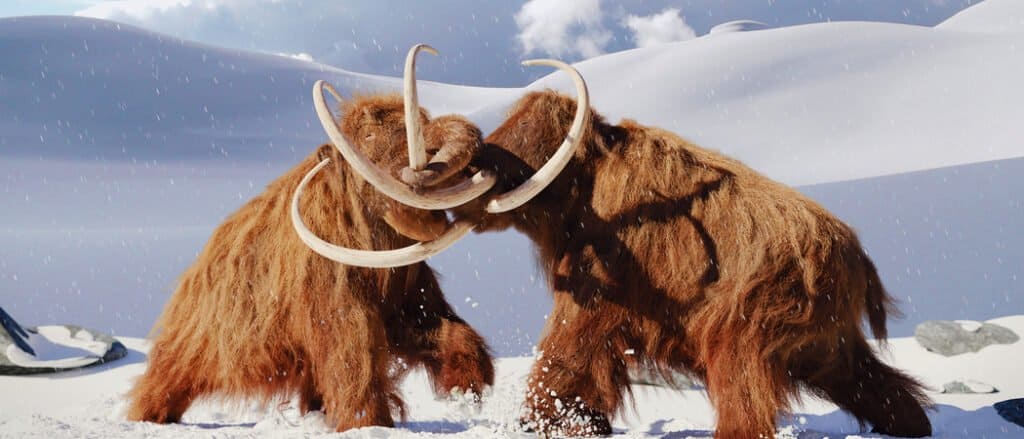
The final woolly mammoths lived in an isolated population on Wrangel Isand in Russia
©Dotted Yeti/Shutterstock.com
Woolly mammoths went extinct on mainlands a few thousand years before they became extinct on the isolated islands that formed. These islands formed as water levels rose at the end of the last Ice Age. The final few living individuals died on Wrangel Island in Russia.
The last existing mammoths on Wrangel Island were genetically unhealthy due to extensive inbreeding. They couldn’t smell, they suffered from frequent developmental issues, their sperm counts were low, and they had a higher rate of diabetes. When enough defects collect to destroy a population, it’s called a genomic meltdown – which the last woolly mammoths endured.
The Wrangel Island mammoths also had a genetic mutation that made their coats cream-colored. This mutation also changed the texture of their coats. They weren’t as insulating and their coloring made them more vulnerable.
Woolly Mammoths and De-Extinction
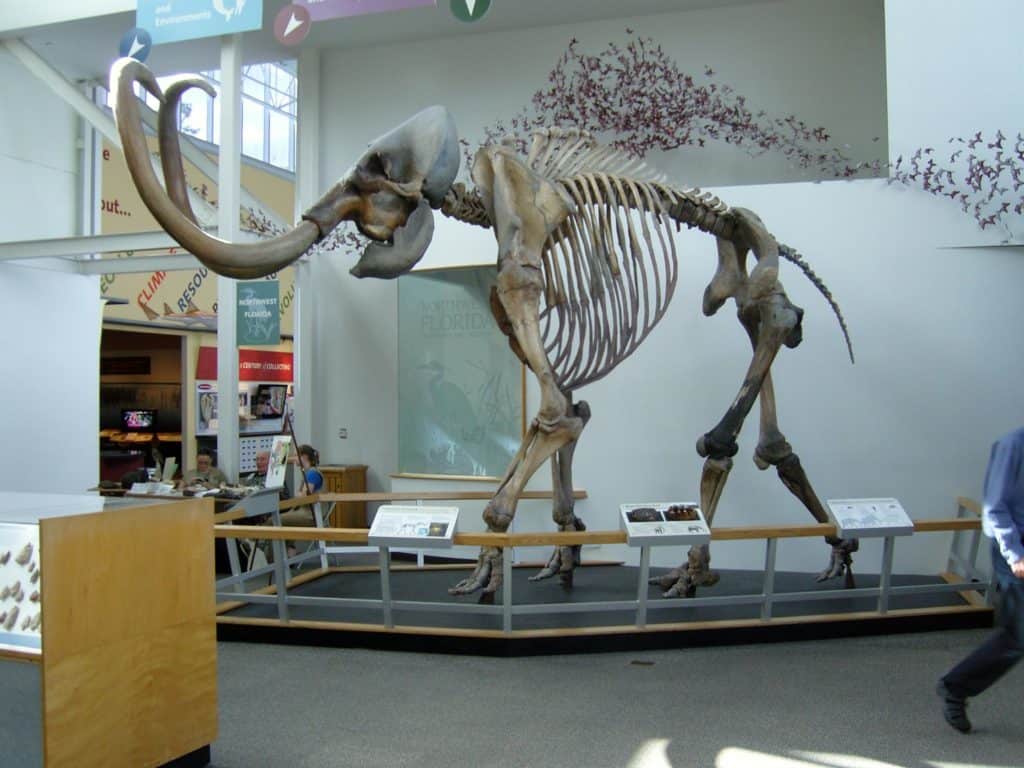
Efforts are being made today to bring back the woolly mammoth using the DNA of elephants
An announcement was made in 2021 by a new company that’s determined to bring back the woolly mammoth. The hope is that it will reoccupy the Siberian tundra in a decade.
While there are examples of well-preserved woolly mammoth DNA, the animal that will be created in a de-extinction effort will not be a replica of a real woolly mammoth. Rather, it will primarily consist of the almost identical DNA of Asian elephants.
Traits characteristic of woolly mammoths like long coats and fattier bodies will be added to the DNA of Asian elephants. This will create a creature almost identical to ancient woolly mammoths.
There are ethical concerns when it comes to resurrecting woolly mammoths. The tundra’s ecosystem has changed since woolly mammoths dominated the scene. Their reintroduction may have unintended but cascading consequences for the Siberian tundra’s extant plants and animals.
Woolly Mammoths and Human Culture
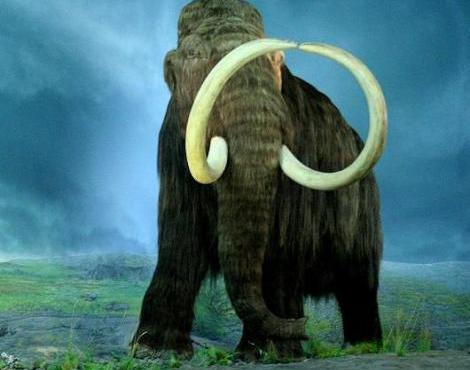
Woolly mammoths and humans lived alongside each other for thousands of years.
Humans and woolly mammoths lived concurrently for a few thousand years. Humans relied on woolly mammoths as a source of food and goods. Extensive evidence of dwellings, tools, art, clothes, and other manufactured items made from mammoth parts dates back 30,000 years.
Woolly mammoths are a common subject in cave art and are the third most common animal depicted. Their bones were commonly misinterpreted as the bones of fantastical creatures throughout written history. A variety of stories, including tales about dragons, may have originated from woolly mammoth fossil sites.
Biblical stories like those about giants are likely the result of megafaunal bones like those of the woolly mammoth. In the 1700’s, when woolly mammoth bones were identified as such, it was commonly believed that elephants were washed to the Arctic during the Great Flood.
Today, Native Siberians believe that the woolly mammoth tusks they sometimes find belong to huge mole-like creatures. It’s believed they died trying to dig their way to the surface. This story made it to other cultures where it was believed that imported woolly mammoth ivory was from mythical rodents.
It’s believed that some oral traditions of Native American communities may be referring to woolly mammoths. Some doubt this though since folk tales usually don’t survive for thousands of years. The oldest known instrument is a flute made of woolly mammoth bone that was made around 30,000 years ago.
Up Next
- 10 Incredible Woolly Mammoth Facts
- Mammoth vs. Elephant: What’s The Difference?
- Discover 8 Of The Biggest Animals That Have Gone Extinct
The photo featured at the top of this post is © iStock.com/Aunt_Spray
Sources
- Journals, Available here: https://journals.plos.org/plosbiology/article?id=10.1371/journal.pbio.0060079
- Science, Available here: https://www.science.org/doi/abs/10.1126/science.abg1134
Thank you for reading! Have some feedback for us? Contact the AZ Animals editorial team.




